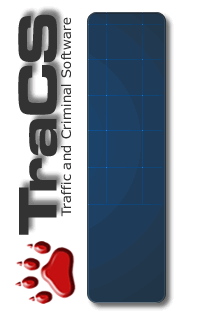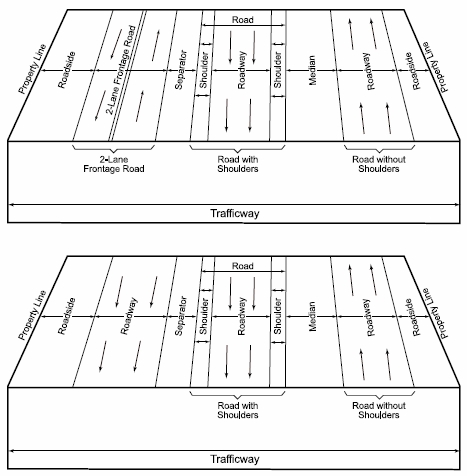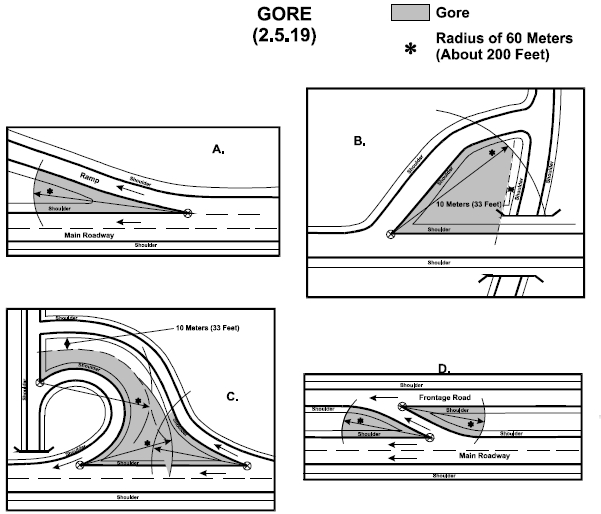

Select the location of the first harmful event as it relates to its position within or outside the trafficway.

01 - On Roadway - The roadway is that part of a trafficway designed, improved and ordinarily used for motor vehicle travel or, where various classes of motor vehicles are segregated, that part of a trafficway used by a particular class. Separate roadways may be provided for northbound and southbound traffic or for trucks and automobiles. Roadway may be noted as the "travel lanes" and, if present, includes the area between the painted "fog lines".
Additionally, a driveway access area is considered part of the roadway of the trafficway to which it connects.
02 - On Shoulder - (if present) is that part of a trafficway contiguous with the roadway for emergency use, for accommodation of stopped vehicles, and for lateral support of the roadway structure. A shoulder should be improved or maintained for these purposes. Not all roadways have shoulders.
03 - On Median - is defined as that area of a divided trafficway between parallel roads separating travel in opposite directions. The principal functions of a median are to provide the desired freedom from interference of opposing traffic, to provide a recovery area for out-of-control vehicles, to provide a stopping area in case of emergencies, and to minimize headlight glare. Medians may be depressed, raised or flush. Flush medians can be as little as 4-feet wide between roadway edge lines. Painted roadway edge lines four (4) or more feet wide denote medians. Medians of lesser width must have a barrier to be considered a median. Continuous Left-turn Lanes are not considered Medians (see 11 - Continuous Left-Turn Lane).
04 - On Roadside - refers to a location off the roadway, but inside the right-of-way. It is the outermost part of the trafficway which lay between the outer property line or other barrier and the edge of the first road encountered in the trafficway. Bicycle lanes and shared use path or trails contiguous with the roadway and sidewalks are also included. In addition, use this option if the first harmful event occurs in a raised or painted center island (directional or channeling) of a roundabout or junction.
05 - Outside Trafficway - is used for areas not open to the public as a matter of right or custom for moving persons or property. This includes property beyond the roadside, outside the boundaries of the trafficway. Also, a portion of the trafficway closed for construction is not a trafficway and would be considered 05 - Outside Trafficway.
06 - Off Roadway - Location Unknown - refers to a location off the roadway, but its relationship to the trafficway boundaries/right-of-way is not known.
07 - In Parking Lane/Zone - refers to an area on the roadway, or next to the roadway, on which parking is permitted in marked or unmarked spaces. This includes curbside and edge of roadway parking (for example, legal residential parking, city-street parking, etc.). Sometimes a strip of roadway can be designated for parking at certain hours of the day (parking lane) and for regular travel at other hours (travel lane). This option should NOT be used during hours when parking is NOT permitted (see 01 - On Roadway).
08 - Gore - is an area of land where two roadways diverge or converge. The area is bounded on two sides by the edges of the roadway, which join at the point of divergence or convergence. The direction of traffic must be the same on both of these roadways. The area includes shoulders or marked pavement if any, between the roadways. The third side is 60 meters (approximately 200 feet) from the point of divergence or convergence or, if any other road is within 70 meters (230 feet) of that point, a line 10 meters (33 feet) from the nearest edge of such road.
Gore Inclusions:
- Areas at rest area or exit ramps
- Areas at truck weigh station entry or exit ramps
- Areas where two main roadways diverge or converge
- Areas where a ramp and another roadway or two ramps, diverge or converge
- Areas where a frontage road and another roadway or two frontage roads diverge or converge
Gore Exclusions:
- Islands for channelizing of vehicle movements
- Islands for pedestrian refuge

10 - Separator is the area of a trafficway between parallel roads separating travel in the same direction or separating a frontage road from other roads. A 10 - Separator may be a physical barrier or a depressed, raised, flush or vegetated area between roads.
11 - Continuous Left-Turn Lane is a two-way left turn lane positioned between opposing straight-through travel lanes.
99 - Unknown select this option when the location of the first harmful event as it relates to its position within or outside the trafficway is not known.
Additional Guidance for Relation to Trafficway
For collision events when the vehicle is overlapping adjacent areas:
- For fixed object collisions, base "Relation to Trafficway" on the location of the object struck.
- Fixed objects that are associated with the trafficway such as curbs, ditches, guardrails, sign supports, utility poles, etc. are not located in the travel lanes or on the shoulder. Therefore, when these fixed objects are contacted in the first harmful event, Relation to Trafficway should be coded as 04 - On Roadside, regardless of the location of the entire vehicle.
- Non-fixed object collisions (e.g., striking a vehicle on the shoulder or pedestrian on the sidewalk) when the striking vehicle is overlapping two locations (e.g., roadway and shoulder) are also coded with respect to the object contacted, not the striking vehicle.
- When a vehicle begins an overturn and is overlapping two locations at the onset of the overturn, use the LAST area the vehicle entered as the location. For example, Roadside would be correct for a case where the documentation identifies a vehicle runs off the roadway, partially through the shoulder, and the front wheels enter the roadside.
- Unless there is clear reason to believe otherwise, ditches and embankments are design features common to trafficways. Therefore, if included as the first harmful event the appropriate Relation to Trafficway is 04 - On Roadside.
- Unless there is clear reason to believe otherwise (e.g., a snow fence in the median), a fence either surrounds private property outside the trafficway or marks the property line boundary ending the trafficway. Therefore, if included as the First Harmful Event the appropriate Relation to Trafficway is 05 - Outside Trafficway.